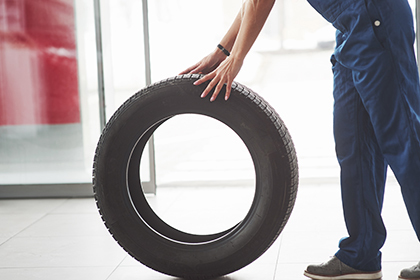INDEPENDENT DEALER
Mission, TX | (956) 458-9399
Oils RGV
OUR BLOG
04/11/2025
Spot the signs you need new tires before it’s too late! AMSOIL Dealer—Oils RGV in Mission, TX, reveals the key warnings and when to replace them for safer driving.

Your car’s tires are its only connection to the road, making them critical for safety and performance. Over time, though, they wear down, and driving on worn tires can compromise your car’s handling, braking, and overall safety. From shaky handling to longer braking distances, driving on tired tires isn’t just risky—it’s a gamble you don’t want to take.
So, how do you know when it’s time to swap them out? In this post, we’ll break down the top signs you need new tires. Buckle up, and let’s make sure you stay safe, smooth, and in control on the road!
Give your engine the care it deserves with AMSOIL! Call Oils RGV in Mission, TX, at (956) 458-9399 for high-performance lubricants. Need more car care supplies? Check out AMSOIL’s online store and stock up!
1. Low Tread Depth: The Most Obvious Sign
The tread depth of your tire determines its ability to maintain a grip on the road. Worn treads struggle to perform well in wet, icy, or slippery conditions, which increases the risk of skidding or losing control.
A simple way to check tread depth is the penny test: Insert a penny into the tread with Lincoln’s head facing down. If you can see the top of his head, your tread is too low. Most tires need at least 2/32 of an inch of tread depth to meet legal requirements, but many drivers replace them earlier for added safety. Don’t wait until it’s too late—check your tread regularly!
2. Cracks in the Sidewall: A Sign of Aging and Wear
Your tires face a lot: UV rays, extreme heat, cold, and rough roads. Over time, these can dry out and crack the rubber. These cracks, often called dry rot, weaken the tire’s structure and can lead to dangerous blowouts. Regularly inspect your sidewalls for cracks or splits. If you spot them, it’s a clear sign you need new tires. Remember, even if the tread looks good, cracked sidewalls are a safety hazard.
3. Bulges or Blisters: A Blowout Waiting to Happen
Have you noticed unusual bulges or blisters on your tires? These are red flags that the tire’s internal structure is damaged, often caused by hitting potholes, curbs, or road debris. Driving on a bulging tire is like playing Russian roulette—it could blow out at any moment. If you see a bulge, replace the tire immediately. Your safety isn’t worth the risk!
4. Uneven Tread Wear: A Warning of Bigger Issues
Uneven tread wear isn’t just unsightly—it’s a sign of underlying problems. Common causes include improper inflation, misalignment, or suspension issues. Here’s what to look for:
- Center wear: Overinflated tires wear more in the middle.
- Edge wear: Underinflated tires wear more on the sides.
- Cupping or patchy wear: This often points to alignment or suspension problems.
Regularly check your tire pressure and schedule alignments to prevent uneven wear and extend tire life.
A simple tire pressure check can save you money on fuel and extend your tires’ life. The AMSOIL Tire Pressure Gauge gives you precise readings every time. Get yours now—call Oils RGV in Mission, TX, at (956) 458-9399. Need more essentials? Shop AMSOIL’s online store today!
5. Tires Are Over Six Years Old: Rubber Doesn’t Last Forever
Even if your tires look fine, age matters. Tire rubber degrades over time, losing its flexibility and strength. Most manufacturers recommend replacing tires every six to ten years, regardless of tread depth. To check your tire’s age, look for the DOT number on the sidewall. The last four digits indicate the week and year of manufacture. Don’t gamble with old tires—replace them before they become a safety hazard.
6. Persistent Loss of Tire Pressure: A Slow Leak or Structural Issue
Tires naturally lose air over time, but if you’re constantly refilling them, there’s likely a problem. Common causes of persistent air pressure loss include small punctures, bead leaks (where the tire meets the rim), or damage to the sidewall. A slow leak might seem minor, but it can lead to a flat tire or blowout. If you can’t find the source of the leak, it’s time to replace the tire.
Conclusion
Your tires are the foundation of your vehicle’s safety, and knowing the signs you need new ones is crucial for staying safe on the road. From low tread depth and sidewall cracks to bulges and uneven wear, these warning signs shouldn’t be ignored. Regular inspections and proactive maintenance can save you from costly repairs—or worse, an accident. So, take a few minutes today to check your tires. Your safety is worth it!
Noticing signs you need new tires? Don’t risk your safety on worn-out treads! Call Oils RGV in Mission, TX, at (956) 458-9399 for trusted AMSOIL solutions. And while you're at it, visit AMSOIL’s online store to keep your car in top shape!
CONTACT